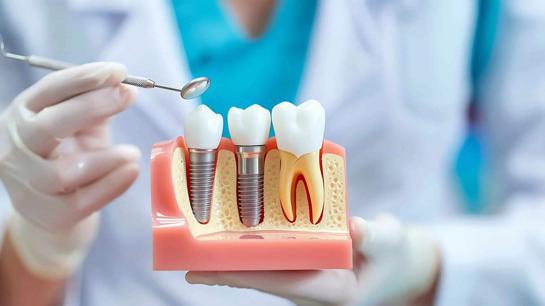Knee Replacement Overseas Guide
Knee replacement offers relief from chronic pain with lower costs, shorter waits, and expert care. This guide explores what surgery involves—procedures, recovery, rehab, and real-life expectations from knee operations overseas.
Let’s skip the polite preamble: choosing knee replacement abroad is almost never someone’s first idea. If you’re here, it probably means the aches have lingered, insurance quotes hit a nerve (pun intended), and you’ve started to wonder if real relief could, or should, involve a plane ticket.
The honest version? You’re not alone—and the crowd looking for knee surgery abroad is bigger, more rational, and more diverse than most imagine. If you’re sifting through stories, bills, and what-ifs, here’s an unpolished, lived-in guide to mapping your own path—one that’s high on answers, low on gloss.
What Actually Is Knee Replacement?
Here’s the thing—you can Google up the details, but the day-to-day impact of chronic knee pain is often lost behind jargon. Knee replacement (also known as knee arthroplasty) involves removing damaged cartilage and bone at the joint and replacing it with durable prosthetic parts—usually metal, high-grade plastic, or a combination. The goal: bring back steady movement, lessen pain, give you your stride and confidence back.
It’s a big decision, but for many, it’s the only way forward once the joint’s worn down beyond help from physio, meds, or minimally invasive options. It’s common for people to feel reassured when they realize the surgery is not about “giving up”—it’s about reclaiming ordinary joys, from morning walks to sleeping without a grimace.
Why Do People Choose Knee Replacement Abroad?
Now, you might be wondering if this is about escaping cost, or escaping waitlists—or something deeper.
People go for knee replacement abroad for a handful of honest reasons:
- Massive savings: Often 50–70% less than home-country pricing (even after travel).
- Access to skilled teams: Many international centers attract senior surgeons with decades of joint surgery experience.
- Shorter waits: Instead of “next year,” it’s “next month”—sometimes sooner.
- Quality care: Modern hospitals with advanced tech, dedicated orthopedics teams, and (yes, really) better food and private rooms.
- Privacy: Some prefer to recover away from the well-meaning eyes and questions of friends, neighbors, or co-workers.
- More control: Patients abroad often report feeling more “in the driver’s seat”—with treatment plan, logistics, and aftercare tailored around them.
It may surprise you to know: many who book knee surgery abroad first tried “everything else.” This is rarely impulsive—it’s the practical, next-best choice.
When Is Knee Replacement the Right Move?
It’s normal to hesitate. Nobody rushes into major joint surgery—especially abroad. You’re an ideal candidate if:
- Pain limits your daily life, from getting groceries to sleep or dressing.
- You’ve worked through pain meds, injections, or endless physiotherapy, with little to show for it.
- X-rays or MRIs confirm advanced arthritis (osteo or rheumatoid) or a destroyed joint from injury.
- You’re generally healthy, or your medical issues are well controlled.
- You want the most out of your functional years—postponing surgery could mean lost time that you might not get back.
Occasionally, people under 50 are considered when pain or damage is severe. There’s no magic age—quality of life always matters most.
The Orthopedic Team and The Care Ecosystem
- Assembling orthopedic surgeons who specialize in knees, not generalists.
- Including anesthesiologists who work daily with high-risk or international patients.
- Providing physio and rehab staff who guide you from first steps to full mobility.
- Assigning English-speaking nurses or coordinators for clearer communication.
- Collaborating with radiologists and techs for tailored diagnostics and digital planning.
Some medical travelers are reassured by accreditation: clinics often have certifications recognized in the US, UK, or EU that ensure infection control, transparency, and results tracking.
Technologies and “How It’s Done” (Not Just the Brochure)
- Pre-op digital imaging lets surgeons “see” your joint and custom-fit implants.
- Some centers offer robotic or computer-navigated knee surgery (improving alignment).
- Minimally invasive methods mean smaller incisions and less muscle disruption.
- Prosthetics are top-brand, long-lasting—sourced from global leaders.
- Aftercare typically includes cryotherapy, rapid mobilization, and help with the logistics of stairs, flights, or travel home.
Results? Clinics routinely share their up-to-date infection rates, complication frequencies, and patient mobility stats—not just promises.
The Patient’s Journey: What To Actually Expect
- Pre-travel consults—phone or video, reviewing your records and expectations.
- Arrival and medical workup—final scans and labs, sometimes a group “joint class.”
- Surgery—usually under spinal or general anesthesia, lasting 1–2 hours.
- Hospital stay—averages 4–7 days abroad, with pain management and early physio.
- Transition to a nearby hotel, recovery suite, or apartment with visiting nurses or daily transport.
- Stepwise rehab—supported walking (crutches, walker), then stairs, then outdoors.
- Equipment you actually use: Wound dressings, cold packs, supportive stockings, and a portable reacher or sock aid. For some, a knee immobilizer or brace—rarely for long.
- Care you won’t see in glossy ads: Hands-on pain management. Stubborn swelling (totally normal!), especially during the first week. Real talk about expectations: no running marathons on week two, but standing at the window for a deep breath—sometimes a near-miracle.
Risks and Trade-Offs
- Infection (generally under 2%, lower at top centers)
- Blood clots (deep vein thrombosis or pulmonary embolism)
- Stiffness or limited range of motion
- Implant loosening or wear over years
- Nerve injury or numbness near the incision
Minimizing risk comes down to the center’s protocols, your own health, and how closely you stick to rehab before and after flying home.
Recovery Snapshots: A Human Timeline
| Phase | What’s Actually Happening |
|---|---|
| First days | Swelling, bruising, “good hurt” after physio. Crutches |
| Week 1–2 | Walking with less support, stairs with help |
| Week 3–4 | Bandages off, swelling recedes, walking “feels normal” |
| Week 6–8 | Steps, shopping, light outings possible |
| 3–6 months | Most movement back, pain much less, life resumes |
| 1 year | Full strength, stairs and walks not a worry |
Each journey is unique; some recover blindingly fast, others have “off” weeks. Most return home during week 2, but stay in touch for virtual check-ins.
How Does It All Compare? (Alternatives Table)
| Option | When Chosen | Pros | Cons |
|---|---|---|---|
| Weight management, physio | Early or mild cases | Non-invasive | Most outgrow it eventually |
| Arthroscopy/minor procedures | Focal cartilage/meniscus issues | Fast recovery | Not for major joint damage |
| Injection therapies | Intermediate cases | Quick, temporary help | Relief fades, not a cure |
| Knee replacement abroad | Severe, widespread arthritis | Lasting relief, new life | Major surgery, rehab needed |
Why Abroad? Pulling Apart the Value
- Lower total costs, often with transparent bundling.
- Caring, unhurried teams—no “line-up and wait.”
- Advanced diagnostics and custom prosthetics.
- Fewer barriers to scheduling, as clinics cater to international timelines.
- Wrap-around support: translation, meals, airport rides, even sightseeing for companions.
- Modern hospitals—spacious recovery rooms, amenities that make healing dignified.
There’s also something about being “somewhere else” that resets expectations. Many describe it as a mix of relief and renewal—a little isolation, perhaps, but often a deeper focus on the healing itself.
FAQ: Real Answers for Grown-Ups
- Is knee replacement abroad painful?
- Yes, but not in the “unbearable” way you might fear. The first days are tough, but pain management is top-notch, and movement eases discomfort sooner than you think.
- How long do I stay?
- Usually about 2 weeks total—5–7 days in hospital, then a week nearby for daily checks and safe travel clearance.
- What about flights?
- Direct, with extra legroom if possible. Move around, wear compression stockings, notify staff—you’re not the first passenger post-surgery.
- Are there language barriers?
- Rarely. Staff at top clinics often speak excellent English. Still, keep crucial phrases on hand, and translate medication names as needed.
- Can I return to work soon?
- Desk jobs: typically 4–6 weeks. Jobs with more standing or lifting: 2–3 months.
- Is the care as good as at home?
- Sometimes better. International clinics rely on reputation—they invest heavily in technology, staff, and aftercare. Still, check credentials, outcomes, and real patient feedback.
Final Thoughts: Taking The First Step
Knee replacement abroad isn’t a last resort—it’s a strategic, hopeful answer when other doors close or drag on too long. It may not be easy: planning, packing, and trusting your care to new hands takes guts. But more and more, real people are finding this route transformative—mobile, pain-free, and, yes, proud of their “made it happen” moment.
Nobody can guarantee a perfect outcome. But you can guarantee yourself the best shot at relief and freedom—on your own terms. If you’re still debating, that’s a sign you care (good).
The next step? Maybe just a walk in your own neighborhood, or maybe, a flight toward something better.























